 |
|
|
|
|
|
Make a mural of the Arctic. All
you need is a large sheet of mural paper about 3 feet by 6 feet and paints
or crayons. Click on the small pictures to download the full sized
artwork, or click on the link below each picture for the PDF version.
Then color, cut out the images and paste to the mural. Print as many copies as you wish. Hints: To make the perspective of your mural put the smallest animals in front. |
|
|
|
|
|
An igloo is made of snow blocks sawed out of the snow. They are not placed layer upon layer, but in a continuous circular line like a snail. Much of the igloo is below the snow porch or entrance which can be blocked off with an animal hide. The Igloo is much bigger than it appears from the outside. |
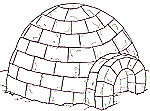 Igloo Click here for a sheet of small size Click here for reversed artwork Click here for PDF Format |
|
|
|
|
To color your polar bear shade with light gray around the edges of his shape so he appears to be rounded. Polar bears have a yellowish tint against the white snow so you can use a very pale yellow on his body. |
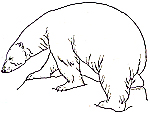 Polar Bear |
|
|
|
|
The largest male polar bear was
measured at eleven feet. Considered a marine mammal the polar bear is
at home in frigid Arctic ocean, kept warm by a layer of fat called blubber.
Polar bears swim long distances, but can be found hunting for seals along
the floe edge where the frozen se ice meet the open ocean. |
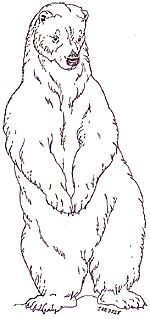 Papa Bear |
|
|
|
|
Polar bear's fur is not white, but clear. Each hair is hollow and funnels the sun's warmth into its black skin. Black absorbs light well. Of course, about the Arctic circle where polar bears live, the sun doesn't appear about the horizon in winter. |
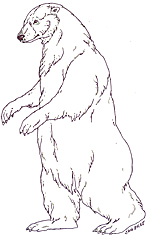 Mama Bear |
|
|
|
|
Mama bear's parka dips down in the front and back, making it recognizable as a woman's garment. Her large hood, called an amauti can be used like a backpack. Her boots are fancy, and would be worn at ceremonial dances and festivals. The are called Kamiit. |
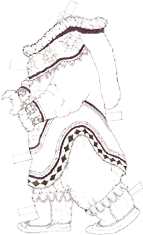 Mama Bear's Clothes |
|
|
|
|
Baby polar bears are the size of a guinea pig when they are born in the snow den the mother bear has made. Sometimes she has twins. In nature, the father bear is not involved in bringing up the cubs. |
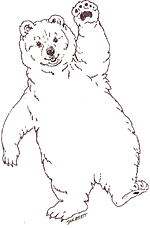 Baby Bear |
|
|
|
|
The flat ice pieces are called pans. They are part of the sea ice which is frozen ocean water. It is salty. The top is white, below is pale blue green. The surrounding ocean is deep blue green. |
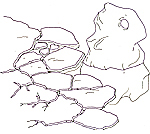 The Floe Edge (Print and connect several sections) |
|
|
|
|
The circular hole in the sea ice is a seal's breathing hole. You could place a seal on the ice near it. Sometimes a polar bear crouches beside the breathing hoe waiting for the seal to appear. The seal is a favorite food of the polar bear. |
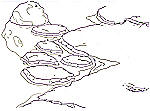 The Floe Edge 2nd Section (Print and connect several sections) |
|
|
|
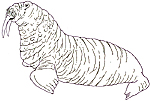 |
|
|
|
|
 |
|
|
|
|
|
|
|
|
|
|
|
The harp seal male and female have
black heads and a black saddle shaped area on their backs. The harp
seal is smaller than the hooded seal. The seal grows to be six feet
three inches and the female five feet eleven inches. |
 Harp Seal with her Pup |
|
|
|
|
When a seal or walrus comes up onto the ice it is said to be hauled out. Both male and females have tusks. |
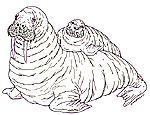 Walrus Mother with her Pups |
|
|
|
|
The male narwhal is 14' to 15'
long. The male has a long spiral tusk, the female does not. The
narwhal's enemies besides man are killer whales and polar bears. It
east fish and shrimp, but does not spear fish with its tusk. |
Underwater Male Narwhal |
|
|
|
|
A woman's knife called a ulu. |
Ulu knife |
|
|
|
|
A teakettle for brewing Labrador tea. |
Teakettle |
|
|
|
|
|
|
|
|
|